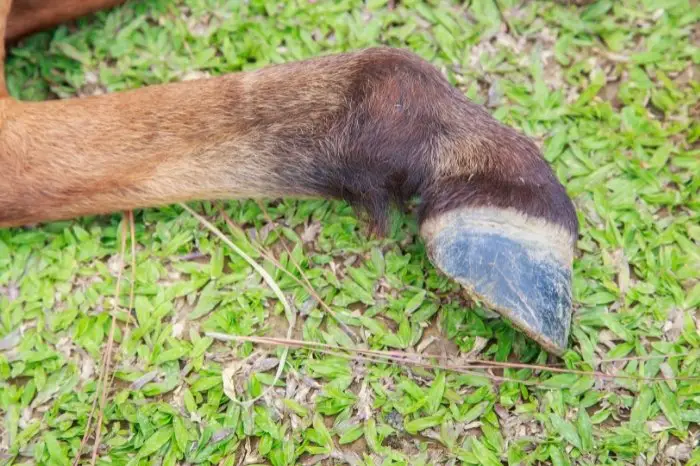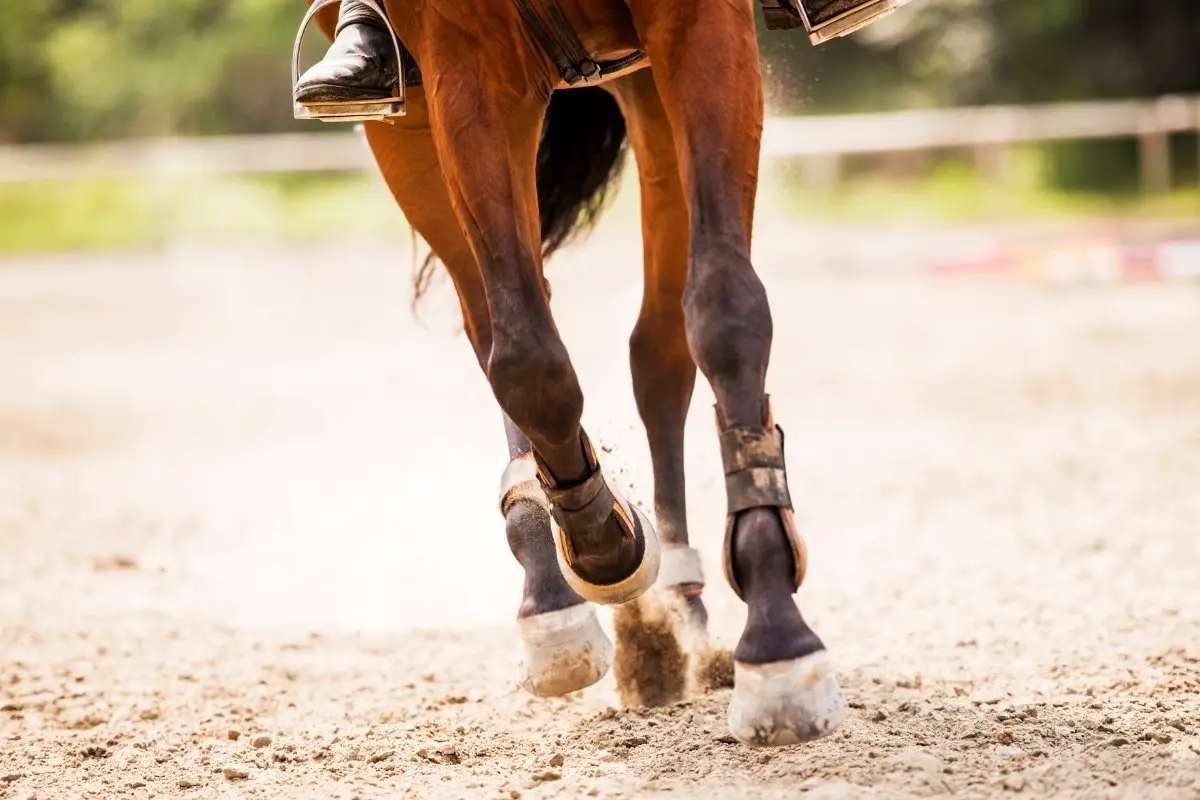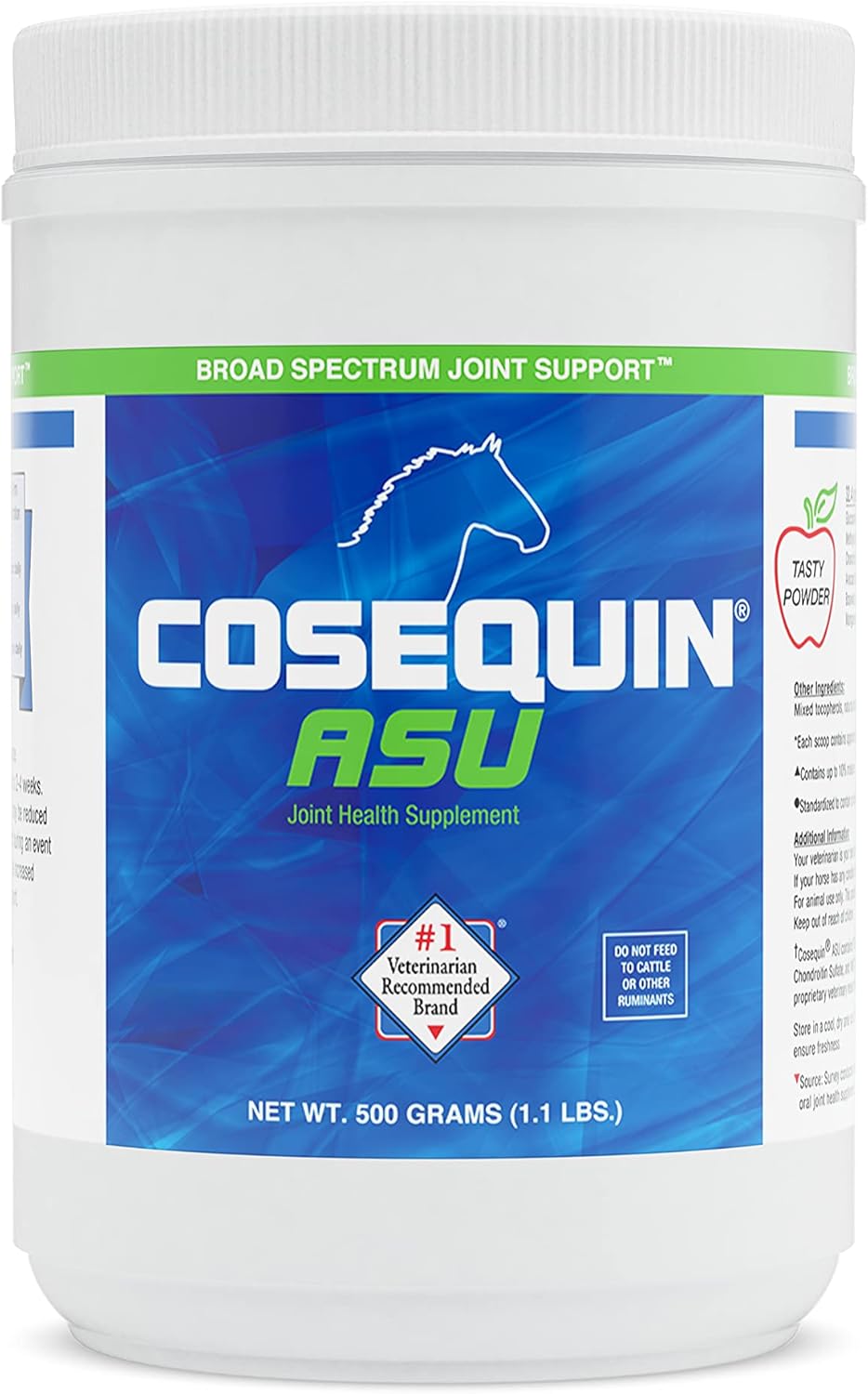Last Updated on March 29, 2022 by Cristina
You may hear a horse owner say that their horse’s legs are stocked up, but what is stocking up in horses and why does it happen? Let’s find out!
What Does It Mean When A Horse Has Swollen Legs? – Stocking Up In Horses
A horse can get swollen legs for one of two reasons: Firstly, it may have an injury or medical condition such as lymphangitis, or it may have filled legs due to a phenomenon called stocking up.
If you find that your horse has one or more swollen legs, it is vital to ensure that the horse has not sustained some kind of injury. Check the legs carefully for wounds, heat, and swelling, and assess the horse to ensure he is not lame or sore-footed.

Assess the overall health of the horse as well – Is he eating and drinking normally? Is he bright and interested in his surroundings? And does he show any signs of ill health such as a fever or increased respiratory rate?
If you are confident that your horse is otherwise fit and well, it is likely that the swelling in his legs is due to a problem called stocking up. This happens when a horse has been stood in a confined area, and fluid accumulates in the lower limbs. You won’t see this fluid, but what you will notice is that the legs are more swollen than normal.
Check Out The Science Behind How Fast Can The Fastest Horse Run
Lymphatic Fluid Role – Stocking Up In Horses
The fluid that builds up when a horse is stocked up is called lymphatic fluid. This is part of the normal circulatory system of the horse and transports white blood cells and waste products around the body.
However, unlike blood, lymphatic fluid is not pumped around the body. It relies on gravity, pressure, and the movement of the horse to propel it around the lymphatic system. This means that when the movement of the horse is restricted, the fluid will build up at the lowest points of the horse.
A key part of the process that moves fluid up the leg is the digital cushion in the hoof. Think of this as a little pump – every time the hoof is placed on the floor, fluid is squeezed out of the digital cushion and pushed back up the limb.
When a horse is stabled for several hours, it will move around far less than a horse that is turned out. This means that fluid is not moved back up the leg, and it will accumulate around the lowest point of the horse – the lower legs. This means you will see a generalized swelling of the tissues of the legs below the knees and hocks.
If a horse has a previous injury to a limb, this problem may be exacerbated. This is because scar tissue often restricts the flow of lymphatic fluid, and you will see an increase in fluid accumulation. Stocking up is also more likely to occur in older horses, perhaps due to reduced function of the cardiovascular system.
How To Treat A Horse That Is Stocked Up
The best way to reduce stocking up in horses is to keep the horse moving around as much as possible. If you find that your horse has filled legs every morning after a night in the stable, it is highly likely that they will return to normal after a few hours of turnout. Encourage him to move around as much as possible, and the fluid will quickly dissipate.
In an ideal world, we would keep our horses turned out in the field at all times, and then stocking up would not occur. However, sometimes it is inevitable that we will need to keep them in a barn or stable, whether because of adverse weather conditions or limited turnout opportunities.
In this situation, it is essential to keep the horse moving around the stable as much as possible. Place food at several points around the stable, rather than in just one place. If you can, take him out for regular exercise, or turn him out in an all-weather arena for free exercise.
Some equine experts recommend leg bandages to prevent stocking up, but these remove the symptom rather than the problem. Incorrectly applied stable bandages can cause rubs and injury that will make stocking up worse when they are removed. There is no real substitution for regular movement and exercise for a horse that suffers from stocking up.
Stocking Up In Horses Summary
So, as we have learned, stocking up in horses occurs when lymphatic fluid accumulates in the tissues of the horse’s legs. This fluid normally circulates around the body, but when a horse is not able to move around as much as normal the fluid builds up in the legs. Stocking up in horses can be prevented with regular exercise.
We’d love to hear your thoughts on stocking up in horses! Do you have a horse whose legs always fill when he is stabled? Or perhaps you think it is more natural to keep horses living outside? Leave a comment below and we’ll get back to you!
FAQ’s
What Does Stocking Up In Horses Mean?
Stocking up is the name used to describe a swelling of the lower legs of the horse. It is normally temporary and is not associated with injury to the horse.
What Is Stocking Up In Horses?
The fluid seen when stocking up occurs is called lymph. This fluid naturally circulates around the body, transporting white blood cells and waste materials. When a horse has filled legs, the lymph has accumulated in higher levels than normal.
How To Spot The Difference Between Stocking Up And Injury In Horses?
If a horse has stocked up, it should not be lame and will not have any heat in the legs. If there is any sign of lameness, or a hot and painful swelling, then the horse may be injured rather than stocked up.
How To Prevent Stocking Up In Horses?
Horses that have restricted movement are more likely to stock up, so it is important that stabled and barn-kept horses have the opportunity to move around and exercise as much as possible.

